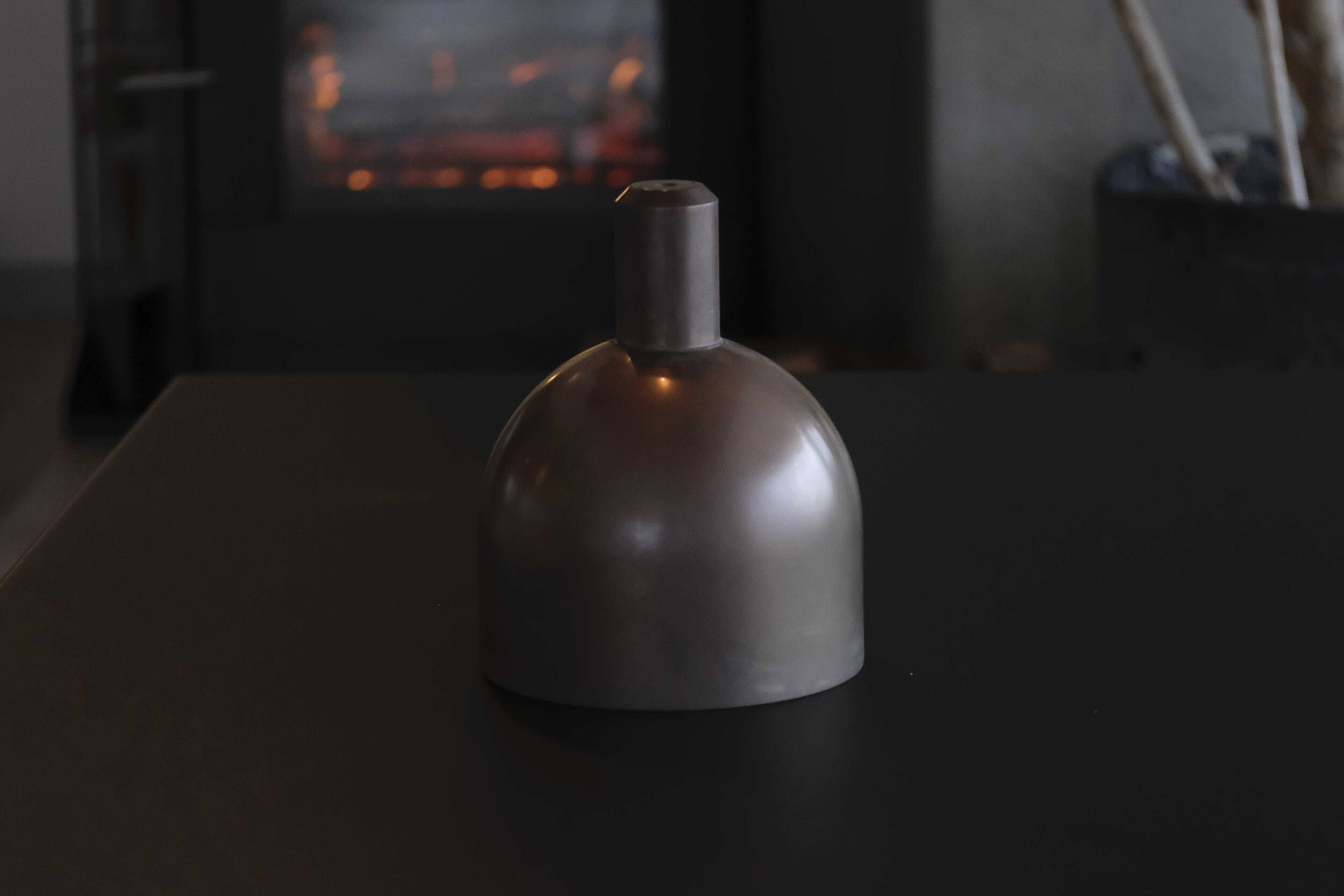Interview with HIROYUKI NAGATOMI / NEW LIGHT POTTERY —part 1
1/2
we hope that our own products will acquire a vintage in the future
— Hiroyuki Nagatomi / NEW LIGHT POTTERY
photography : Hiroki Kawata
words : Reiji Yamakura/IDREIT
A lighting studio NEW LIGHT POTTERY was established in Nara in 2015 by Hiroyuki Nagatomi and Chizu Nara who used to work in lighting manufacturing. They set out in lighting planning as designers, and at the same time, they started selling their own lighting equipment.
We asked the representative Nagatomi about the intentions for developing their original products which IDREIT is keeping an eye on.
A popular brass-made pendant lighting ‘Bullet’ for E26. The designer use casting and machining to create ideal form and texture.
Could you first tell us about your outstanding work ‘Bullet’?
Bullet is a custom design and it became the basic pattern ever since we got the request for that simple pendant lamp during our time in lighting manufacturer.
Initially, it was made by cutting up brass pipes, but we wanted it to improve the thickness of the material as well as increase the weight to stretch the cord straight. In the next iteration, the metal was machined, and although costly, we were satisfied with the result.
After that, we were thinking about going independent, so we asked a manufacturer in Toyama which is famous for a casting, to mass-produce our product.
Which one did you mass-produce first?
Bullet and Bullet small. Both were manufactured by casting and machining. Bullet was installed in a lot of stores in the past, so the ideal form was already in our minds. As a result, we were able to invest heavily without hesitation in order to mass-produce them.
‘Bullet small’ was developed for E 17 bulbs. They applied polish finish for Bullet series without any clear coating and painting.
They offer several models with flat shade and round shade. For the flat shade, they have 190mm and 150mm models.
Did you do any processing to the surface of the brass?
Paint is not applied to the brass because we want to make it age with time. I am interested in materials in which long-term use develops additional charm, and we hope that our own products will acquire a vintage in the future.
The sample of ‘Bullet round shade brass’ after 3 years use in outside. The shiny gold surface has become covered in beautiful black patina. (photography: NEW LIGHT POTTERY)
How did the lampshade models increase?
Naturally, the types of models have increased, such as the additional disc-like lampshade which aims to cut light in the upward direction, and the round shade which shines directly down onto a tabletop. Since then, Bullet parts have been repurposed with glass and stands to made even more model varieties. Furthermore, a black model was created by applying Japanese traditional techniques such as a lacquering. Unlike painting, lacquering retains the characteristics of the texture and grain of the metal.
Bullet series has black models with traditional technics using Urushi lacquer. About the round shade model, they provides wide and narrow models.
The black model shows what NEW LIGHT POTTERY wants to express. What is the concept of Digdug?
Digdug’s inspiration was different from Bullet. Originally, there were mas-produced white porcelain sockets which were my personal favorite. However, I did not like the glossy finish on the surface although I did like the shape.
I visited the factory and requested to produce it without the glaze. They started with making a matte white sockets. After that, we wanted to create coloured one and ordered them to mix a pigment. Then, we combined the white and the brown sockets, and attached the wood and brass parts to the top. Finally, it turned into the present design which is like geological layer.
For the type which attaches with clips, there was a ready-made clip whose size matched, however, I ordered a silver overlay because I did not like the gold plating.
We did not set out to create an original design, we only hoped to create a lighting fixture from the idea of if there was a simple bare light bulb using a favorite socket.
I think of it as ready-made from parts available around the world.
A pendant lamp ‘Digdug suspension’ comprises ceramic socket, wood, and brass parts in layer. NEW LIGHT POTTERY ordered original finish for the mas-produced porcelain socket.
You are able to create products that personify NEW LIGHT POTTERY because you customise details even if you use a ready-made component. You fine-tuned the colors and finishes. Is it because you have been going out to field sites for a long time?
Exactly. I used to work in manufacturing, so I think it is good that I am able to have a connection with people who work in the factory.
>>> continue to part 2
“Interview with HIROYUKI NAGATOMI / NEW LIGHT POTTERY —part 2”
RELATED POST
>>> designed by NEW LIGHT POTTERY
>>> stories on IDREIT











